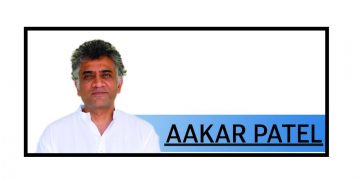India’s annual agricultural productivity overly depends on the monsoon rains and accuracy in weather forecasting is vital. Although technological upgrade is essential to ensure predictions are precise and correct, meteorologists are of the opinion that the country’s unique topographic location makes it impossible to banish the element of unpredictability from forecasts
The met centre in Bhubaneswar is currently operating with eight processors while it needs 100 high-speed processors to ensure speed and accuracy in forecasting
Indian farmers are over-reliant on monsoon over which they have no control. Despite their overdependence on rainfall during the season and repeated suffering due to droughts, the Indian Meteorological (Met) Department (IMD) is yet to devise a system to ensure accuracy in prediction of monsoon that plays a vital role in the country’s annual economic performance.
Even though weather forecast is a complex affair and it is difficult to maintain accuracy, the general opinion is the system suffers from limitations. The Earth’s atmosphere is a complicated system that is affected by many factors and can react in different ways. However, more accuracy can be maintained in weather prediction provided more research is carried out in the field. But the system is built on the old computing model with an extremely low processing power and suffers from lack of specific instruments.
The Indian economy is dependent on monsoon rains as a large part of the agricultural produce is monsoon-fed crops. It is important, therefore, that the department takes all possible measures for accurate monsoon prediction to help the farming sector, while accuracy is also required to predict cyclones, thunderstorms and earthquakes.
“The IMD lacks proper infrastructure and is poorly equipped for proper prediction,” said Sushant Kishore Khuntia, associate professor at the department of agribusiness management, Utkal University. “There should be ample mini stations or weather observatories across the nation. There are a few stations at the district levels but these are not well-equipped to deliver accurate data,” he said.
“If we see the IMD as a whole, there is shortage of skilled manpower. In addition, there is lack of sophisticated equipment and ultrasensitive machinery to receive and deliver the current climatic conditions crucial to prediction. As India is basically an agro-based economy and agriculture mostly depends on the weather, the major thrust of the government should be on the forecast system. But it is unfortunate that the government pumps in meagre amounts to the IMD to improve the forecast system,” lamented Khuntia, who is also an agribusiness consultant.
The entrepreneur suggested that the government should rope in private firms for cooperation in collection of data and analysis. They should also be encouraged to evolve advanced software for proper processing of data. Such a system is prevalent in many European and other developed countries where the forecast system is more accurate, he pointed out.
Sarat Chandra Sahu, director, IMD, Bhubaneswar said five predictors were used to create models for monsoon forecast. They are:
- NE Pacific to NW Atlantic SST Anomaly Gradient
- Southeast Equatorial Indian Ocean Sea Surface Temperature
- East Asia Mean Sea Level Pressure
- Central Pacific (Nino 3.4) Sea Surface Temperature
- North Central Pacific 850 Zonal Wind Gradient
The methodology is known as the ensemble statistical forecasting system. By way of multiple regressions, these predictors are projected to create models using various permutations and combinations. After the average of the forecast emerges the best of these models are considered to arrive at the final figure.
Sahu said more accuracy has been achieved in monsoon prediction after the introduction of this (ensemble statistical forecasting) system a few years back. There have been considerable improvements in predicting the drift of other weather patterns after using this methodology which is a combination of mathematical and physical programmes.
While meteorologists say that with a statistical model, accuracy of predictions is hard to achieve, Sahu admitted that more refinement is required in statistical skill.
Even though the level of accuracy in prediction has improved after introduction of satellites and recently Doppler radars at several centres, the department is lagging behind in the use of other advanced equipment.
He said steps are being taken to address the issue with efforts to evolve a dynamic model of prediction, in which the ocean and atmospheric temperature levels are coupled to create a single model.
The centre in Bhubaneswar is currently operating with eight processors, while it needs 100 high-speed processors for ensuring speed and accuracy in forecasting. Supercomputer Aditya was tested for this dynamic model of forecasting at the IMD’s Pune centre. The centre should be able to switch to this method of forecasting in a short time, he added.
There are three models of weather prediction – WRF (Weather Research and Forecasting), GFS (Global Forecast System) and ECMWF (a numerical weather forecast system). The IMD in Bhubaneswar follows the WRF system for forecasts in Orissa, while the ECMWM is followed in European countries.
The WRF model is a next-generation meso-scale numerical weather prediction system designed for both atmospheric research and operational forecasting needs. It features two dynamic cores, a data assimilation system, and a software architecture facilitating parallel computation and system extensibility. The model serves a wide range of meteorological applications from tens of metres to thousands of kilometres. WRF can generate atmospheric simulations using real data or idealised conditions. It offers operational forecasting in a flexible and computationally-efficient platform. However, the server used for processing the data is comparatively slow, which sometimes results in delayed prediction, said Sahu. This problem can be addressed after the introduction of the supercomputer Aditya.
Sahu further said that in the country and state the network of observation centres is sparse, for which it is difficult to maintain 100 per cent accuracy in prediction.
The IMD has set up observatories in 177 blocks across the state; however, in most of these observatories, the equipment has become defunct. A proposal has been given to the state government to replace the equipment and set up observatories in the rest of the blocks.
“The IMD issues its first monsoon forecast in April which is updated in June after more data arrive. In April, an advanced forecast is given so that the government has enough time to respond. It issues a forecast for the country as a whole – whether a drought is likely or whether there would be normal monsoon or an above-normal one. If the focus is entirely regional it may not meet the standard of accuracy,” Sahu added.
The topographic position of India is also responsible for the failure of prediction, he said. The other complexity involved is the influence of the ocean. India is locked in the north and south by the Himalayas and the Indian Ocean respectively. The Himalayas have a non-linear topography and the monsoon system that forms is very tricky. Its relationship with ocean dynamics is difficult and it is tough to predict the behaviour of the Indian Ocean and its impact on monsoon.
Geographical location
While it is true that our technological capabilities don’t match those of the USA and other highly developed western countries so far as weather prediction is concerned, the primary reason behind lack of accuracy in prediction is India’s geographical location. The weather pattern in India is tropical in nature whereas the US has temperate climatic conditions. In temperate regions, the climate is regulated mostly by frontal air masses and dynamic low pressure systems that can be predicted quite accurately. But tropical climate is predominantly dependent on insulation (quite high in India) and trade and seasonal winds.
Factors like ENSO (El Nino Southern Oscillation) further alter the direction of ocean currents and winds. All these together results in our complex weather which is quite difficult to predict. Causes and behaviour of El-Nino are still not understood properly.
What is ENSO?
ENSO refers to anomalously warm or cold sea surface temperature that develops for long periods of time off the western coast of South America. El Nino or Pacific warm episode represents the warm phase of the oscillation while La Nina represents the cold phase. Although there is no one-to-one correspondence between ENSO and the Indian monsoon, the warm phase of ENSO is generally associated with weaker than normal monsoon and vice versa.
Doppler radars
After the Doppler radars were set up at Paradip and Gopalpur, there has been no major cyclonic storm. Radars are capable of predicting cyclonic storms, thunderstorms within wind speeds of 250 km/hr and movement of storms. They identify a storm’s eye and its coverage area, excessive rainfall and thunderstorms and hailstorms more accurately. Two more Doppler radars will be set up at Sambalpur and Balasore.
Dr. Rabindranath Hota, professor, department geology, Utkal University, however, has a different opinion. He said: “Due to climate change, the Indian monsoon system has become defunct. The rainfall that the IMD terms as monsoon rains is actually depression-triggered rainfall.”
He emphasised that if a monsoon system actually exists in India, the IMD could predict it, as it does in the case of cyclones and depressions.
“Around 30 years back, when monsoon touched India the country used to experience heavy and continuous rainfall for around 8-9 days at a stretch. Such rainfall does not occur nowadays,” he added.
“We cannot stop natural disasters but we can arm ourselves with the knowledge of their occurrence beforehand to mitigate their effects and hence prediction and accuracy in forecast play a vital role in devising plans to mitigate the effects of calamities. It is high time the IMD equipped itself with the latest technology to attain the highest level of forecast accuracy,” said Anulata, a freelance soft skills trainer.
- IMD’s monsoon forecasts turned out correct only on four occasions in the last 16 years (taking the stipulated model error of ±5 per cent as the yardstick for determining accuracy)
- The accuracy rate of long-range rainfall predictions works out to a mere 25 per cent. Thus, the failure rate is as high as 75 per cent, which makes the projections unreliable
- In seven of the 12 anomalous forecasts, the difference between the predicted rainfall and the actual was over 10 per cent, which is way off the mark. In the drought years of 2002 and 2009, this difference was as high as 20 per cent and 19 per cent respectively
- IMD has erred not only in forecasting droughts or rainfall deficiency, it has been unable to foresee even excess or above-normal rainfall accurately. It forecast rains of over 100 per cent above normal on only two occasions. Both times the difference between the predictions and actual rainfall was over 10 per cent. One of these occasions was in 2004, when the IMD forecast put the likely rainfall at 101 per cent of normal, but actual rainfall was only 81 per cent of normal, causing severe droughts.
- The Long Range Forecast by IMD in June predicted 93 per cent rainfall (below normal) but India received only 77 per cent rainfall by the end of the year – a huge margin of difference. Pragatiprava







































